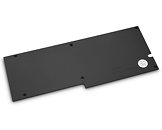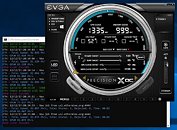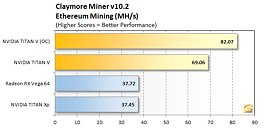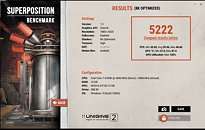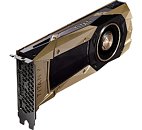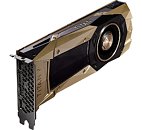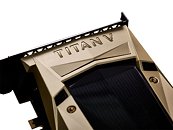Apr 6th, 2025 22:45 EDT
change timezone
Latest GPU Drivers
New Forum Posts
- 9070XT or 7900XT (42)
- No idea how many watts this USB-C port will supply? (3)
- gpu heirarchy/performance/benchmarks- whos lying? (39)
- Share your AIDA 64 cache and memory benchmark here (3049)
- I dont think the HT-Omega sound card company has anyone running it anymore. Cant get responses from customer service for last 2 years. (2)
- A dozen drivers for HD4670, and which do I choose? (10)
- What's your latest tech purchase? (23486)
- What are you playing? (23349)
- i7-13700HX capped at 25 watts (13)
- Weird games on rtx 3070ti (1)
Popular Reviews
- ASUS Prime X870-P Wi-Fi Review
- UPERFECT UStation Delta Max Review - Two Screens In One
- PowerColor Radeon RX 9070 Hellhound Review
- Upcoming Hardware Launches 2025 (Updated Apr 2025)
- Corsair RM750x Shift 750 W Review
- Sapphire Radeon RX 9070 XT Pulse Review
- Sapphire Radeon RX 9070 XT Nitro+ Review - Beating NVIDIA
- DDR5 CUDIMM Explained & Benched - The New Memory Standard
- AMD Ryzen 7 9800X3D Review - The Best Gaming Processor
- AMD Ryzen 9 9950X3D Review - Great for Gaming and Productivity
Controversial News Posts
- MSI Doesn't Plan Radeon RX 9000 Series GPUs, Skips AMD RDNA 4 Generation Entirely (146)
- NVIDIA GeForce RTX 5060 Ti 16 GB SKU Likely Launching at $499, According to Supply Chain Leak (135)
- Microsoft Introduces Copilot for Gaming (124)
- AMD Radeon RX 9070 XT Reportedly Outperforms RTX 5080 Through Undervolting (119)
- NVIDIA Reportedly Prepares GeForce RTX 5060 and RTX 5060 Ti Unveil Tomorrow (115)
- Over 200,000 Sold Radeon RX 9070 and RX 9070 XT GPUs? AMD Says No Number was Given (100)
- NVIDIA GeForce RTX 5050, RTX 5060, and RTX 5060 Ti Specifications Leak (97)
- Nintendo Switch 2 Launches June 5 at $449.99 with New Hardware and Games (92)
News Posts matching #TITAN V
Return to Keyword Browsing
EK Water Blocks Unveils EK-FC GV100 Pro, A Water Block for Professionals
EK Water Blocks, the premium computer liquid cooling gear manufacturer, is releasing a workstation/server grade water block for some of the most powerful Workstation GPUs on the market today based on the NVIDIA GV100 graphic chip. That includes both the Quadro GV100 and Tesla V100, as well as the Titan V. The EK-FC GV100 Pro water block spans across the entire length of the card cooling all critical components.
With the launch of this water block, its clear that EKs plan of expansion into the professional workstation and server grade market is well under way. In the following months you can expect many more worksation and enterprise cooling solutions from EK.
With the launch of this water block, its clear that EKs plan of expansion into the professional workstation and server grade market is well under way. In the following months you can expect many more worksation and enterprise cooling solutions from EK.

NVIDIA GeForce RTX 2000 Series Specifications Pieced Together
Later today (20th August), NVIDIA will formally unveil its GeForce RTX 2000 series consumer graphics cards. This marks a major change in the brand name, triggered with the introduction of the new RT Cores, specialized components that accelerate real-time ray-tracing, a task too taxing on conventional CUDA cores. Ray-tracing and DNN acceleration requires SIMD components to crunch 4x4x4 matrix multiplication, which is what RT cores (and tensor cores) specialize at. The chips still have CUDA cores for everything else. This generation also debuts the new GDDR6 memory standard, although unlike GeForce "Pascal," the new GeForce "Turing" won't see a doubling in memory sizes.
NVIDIA is expected to debut the generation with the new GeForce RTX 2080 later today, with market availability by end of Month. Going by older rumors, the company could launch the lower RTX 2070 and higher RTX 2080+ by late-September, and the mid-range RTX 2060 series in October. Apparently the high-end RTX 2080 Ti could come out sooner than expected, given that VideoCardz already has some of its specifications in hand. Not a lot is known about how "Turing" compares with "Volta" in performance, but given that the TITAN V comes with tensor cores that can [in theory] be re-purposed as RT cores; it could continue on as NVIDIA's halo SKU for the client-segment.
NVIDIA is expected to debut the generation with the new GeForce RTX 2080 later today, with market availability by end of Month. Going by older rumors, the company could launch the lower RTX 2070 and higher RTX 2080+ by late-September, and the mid-range RTX 2060 series in October. Apparently the high-end RTX 2080 Ti could come out sooner than expected, given that VideoCardz already has some of its specifications in hand. Not a lot is known about how "Turing" compares with "Volta" in performance, but given that the TITAN V comes with tensor cores that can [in theory] be re-purposed as RT cores; it could continue on as NVIDIA's halo SKU for the client-segment.

NVIDIA Posts Cryptic #BeForTheGame Video Pointing at 20th August
When NVIDIA debuted its "Turing" GPU architecture through its recent Quadro RTX series, PC enthusiasts felt being left hung and dry. The occasion was SIGGRAPH, the biggest annual expo of digital content creators, and so a Quadro unveiling felt fitting. Come 21st August, and Gamescom will be almost upon us. NVIDIA is planning its own event in host city Cologne a day earlier. The theme of the event is "Be For The Game."
NVIDIA posted the mother of all teasers pointing to the August 20 event. It doesn't mention a new product launch, but there are enough hints, such as the back-plate reminiscent of TITAN V, combined with glossy green and black surfaces that look similar to the Quadro RTX reference boards. The video winks at both gamers and PC enthusiasts, with the first half depicting a sick build being put together. We can't wait!The video follows.
NVIDIA posted the mother of all teasers pointing to the August 20 event. It doesn't mention a new product launch, but there are enough hints, such as the back-plate reminiscent of TITAN V, combined with glossy green and black surfaces that look similar to the Quadro RTX reference boards. The video winks at both gamers and PC enthusiasts, with the first half depicting a sick build being put together. We can't wait!The video follows.

NVIDIA "GT104" Based GeForce GTX 1180 Surfaces on Vietnamese Stores
A Vietnamese online store put up the first listing of a GeForce GTX 1180 based ASUS ROG Strix graphics card. The store even put out some specifications of the card, beginning with it being based on the "GT104" silicon, based on the "Turing" series. With "Turing" NVIDIA appears to be forking its GPU architectures on the basis of chips that feature DPFP (double-precision floating point) cores and Tensor cores, and those that lack both (and only feature SPFP cores). "Turing" is probably a fork of "Volta" that lacks both DPFP CUDA cores and Tensor cores; and sticks to the cheaper GDDR6 memory architecture, while "Volta" based GPUs, such as the TITAN V, implement pricier HBM2 memory.
Among the specifications of the GeForce GTX 1180 are 3,584 CUDA cores, and 16 GB of GDDR6 memory across a 256-bit wide memory interface. The memory is clocked at 14 GHz (GDDR6-effective), which works out to 409.6 GB/s of memory bandwidth. Pre-launch prices, just like most specifications, tend to be bovine excrement, which in this case converts to a little over USD $1,500, and isn't really relevant. What is, however, interesting is the availability date of September 28.
Among the specifications of the GeForce GTX 1180 are 3,584 CUDA cores, and 16 GB of GDDR6 memory across a 256-bit wide memory interface. The memory is clocked at 14 GHz (GDDR6-effective), which works out to 409.6 GB/s of memory bandwidth. Pre-launch prices, just like most specifications, tend to be bovine excrement, which in this case converts to a little over USD $1,500, and isn't really relevant. What is, however, interesting is the availability date of September 28.
4K Ultra HD Monitors with 144 Hz Refresh-rate and G-SYNC HDR Start Being Available
As we reported in March, the first 4K monitors with 144 Hz refresh-rate began showing up in stores. This summer, PC gamers and enthusiasts up for a monitor upgrade, are in for a treat. An increasing number of companies are preparing to launch monitors with not just 4K Ultra HD resolution (3840 x 2160 pixels), but also staggering 144 Hz refresh-rates, and support for adaptive sync technologies, such as AMD FreeSync and NVIDIA G-Sync. To push 4K at 144 Hz, you'll need your graphics card to feature DisplayPort 1.4 (or above) connectivity, as DisplayPort 1.2, or even the newer HDMI 2.0, lack the required bandwidth.
Among the first blazing fast 4K UHD + 144 Hz monitors, are the 2018 Acer Predator X27 (UM.HX0EE.009) first unveiled in 2017, and soon to be joined by the ASUS ROG Swift PG27UQ. Both monitors feature 4K Ultra HD resolution, 144 Hz refresh-rate, IPS quantum-dot panels, and support for the new NVIDIA G-SYNC HDR standard. The monitors take input from DisplayPort 1.4 and HDMI 2.0, although you will need DisplayPort 1.4 to get 4K @ 144 Hz to work correctly. The IPS quantum-dot panels feature DCI-P3 color-standards, 99% Adobe RGB coverage, and 10 bpc (1.07 billion-color) palette, in addition to 384 LED elements backlighting the panel. The ROG Swift PG27UQ starts at 2,445€ and the Predator X27 at 18,475 DKK Sounds good? Get ready to foot upwards of USD $3,000 for either of them, to go with your $3,000 TITAN V, for a 3,000-inch e-p.
Among the first blazing fast 4K UHD + 144 Hz monitors, are the 2018 Acer Predator X27 (UM.HX0EE.009) first unveiled in 2017, and soon to be joined by the ASUS ROG Swift PG27UQ. Both monitors feature 4K Ultra HD resolution, 144 Hz refresh-rate, IPS quantum-dot panels, and support for the new NVIDIA G-SYNC HDR standard. The monitors take input from DisplayPort 1.4 and HDMI 2.0, although you will need DisplayPort 1.4 to get 4K @ 144 Hz to work correctly. The IPS quantum-dot panels feature DCI-P3 color-standards, 99% Adobe RGB coverage, and 10 bpc (1.07 billion-color) palette, in addition to 384 LED elements backlighting the panel. The ROG Swift PG27UQ starts at 2,445€ and the Predator X27 at 18,475 DKK Sounds good? Get ready to foot upwards of USD $3,000 for either of them, to go with your $3,000 TITAN V, for a 3,000-inch e-p.

EK Unveils NVIDIA TITAN V Full-coverage Water-block
EK Water Blocks, the Slovenia-based premium computer liquid cooling gear manufacturer, is releasing water blocks for the most powerful PC GPU on the market to this day, the NVIDIA Titan V. The EK-FC Titan V full cover GPU water block will help you enjoy the full computing power of the Volta architecture based NVIDIA Titan V in a silent environment.
This water block directly cools the GPU, HBM2 memory, and VRM (voltage regulation module) as well! Water is channeled directly over these critical areas, thus allowing the graphics card and it's VRM to remain stable under high overclocks and to reach full boost clocks. EK-FC Titan V water block features a central inlet split-flow cooling engine design for best possible cooling performance, which also works flawlessly with reversed water flow without adversely affecting the cooling performance. Moreover, such design offers great hydraulic performance allowing this product to be used in liquid cooling systems using weaker water pumps.
This water block directly cools the GPU, HBM2 memory, and VRM (voltage regulation module) as well! Water is channeled directly over these critical areas, thus allowing the graphics card and it's VRM to remain stable under high overclocks and to reach full boost clocks. EK-FC Titan V water block features a central inlet split-flow cooling engine design for best possible cooling performance, which also works flawlessly with reversed water flow without adversely affecting the cooling performance. Moreover, such design offers great hydraulic performance allowing this product to be used in liquid cooling systems using weaker water pumps.

NVIDIA to Unveil "Turing" Consumer Graphics GPU Next Month
NVIDIA is reportedly working on a TITAN V-esque surprise for March 2018. According to Reuters, which summarized the company's Q4-2017 results and outlook, the company is working on a new consumer-graphics GPU for launch next month, codenamed "Turing." This could be the codename of an ASIC or an SKU and not the architecture (which could be "Volta"). The Reuters report describes "Turing" as a "new GPU gaming chip." This unequivocally points to a consumer graphics (GeForce) product, and not a professional (Quadro), or HPC (Tesla) product.

NVIDIA Quadro GV100 Surfaces in Latest NVFlash Binary
NVIDIA could be giving final touches to its Quadro GV100 "Volta" professional graphics card, after the surprise late-2017 launch of the NVIDIA TITAN V. The card was found listed in the binary view of the latest version of NVFlash (v5.427.0), the most popular NVIDIA graphics card BIOS extraction and flashing utility. Since its feature-set upgrade to the TITAN Xp through newer drivers, NVIDIA has given the TITAN family of graphics cards a quasi-professional differentiation from its GeForce GTX family.
The Quadro family still has the most professional features, software certifications, and are sought after by big companies into graphics design, media, animation, architecture, resource exploration, etc. The Quadro GV100 could hence yet be more feature-rich than the TITAN V. With its GV100 silicon, NVIDIA is using a common ASIC and board design for its Tesla V100 PCIe add-in card variants, the TITAN V, and the Quadro GV100. While the company endowed the TITAN V with 12 GB of HBM2 memory using 3 out of 4 memory stacks the ASIC is capable of holding; there's an opportunity for NVIDIA to differentiate the Quadro GV100 by giving it that 4th memory stack, and 16 GB of total memory. You can download the latest version of NVFlash here.
The Quadro family still has the most professional features, software certifications, and are sought after by big companies into graphics design, media, animation, architecture, resource exploration, etc. The Quadro GV100 could hence yet be more feature-rich than the TITAN V. With its GV100 silicon, NVIDIA is using a common ASIC and board design for its Tesla V100 PCIe add-in card variants, the TITAN V, and the Quadro GV100. While the company endowed the TITAN V with 12 GB of HBM2 memory using 3 out of 4 memory stacks the ASIC is capable of holding; there's an opportunity for NVIDIA to differentiate the Quadro GV100 by giving it that 4th memory stack, and 16 GB of total memory. You can download the latest version of NVFlash here.

NVIDIA Titan V Achieves 82 MH/s in Ethereum Mining
"But how well does it mine?" This is one of the questions in the mind of many in the enthusiast community whenever a new GPU is launched. These are a fickle lot, to be sure; their primary interest is the power/performance ratio of any graphics card, which enables miners to maximize profits. Price/performance isn't much of a concern when users are confident they'll recoup the totality of their investment in the medium run - and sometimes even the short run, if recent changes in Ethereum pricing are any indication.
The folks at HotHardware have put an NVIDIA Titan V through its paces in Ethereum mining, eager to see this Volta-based chips' prowess in this type of workloads. Titan V reveals itself as a graphics card that achieves 69 MH/s at stock settings - and an even more impressive 82 MH/s when slightly overclocked. Overclocking methodology was simple - increase temperature and power targets for the Titan V, and then increase memory frequency until a bottleneck was found. And voila. The Titan V was happily churning out 82 MH/s in version 10.2 of the Claymore Miner - more than double the output of an RX Vega 64 and Titan Xp. Power consumption wasn't detailed in this test, and the Titan V would almost definitely consume more power than a Titan Xp - the chip is double the size - but when we take into account the fact that its TDP is the same, that it's built on a 12 nm process against the Titan Xp's 16 nm, and that it uses HBM2 memory instead of GDDR5X... Well, the differences likely aren't anything to write home about. But the performance is. I'll leave it over to our expert miners to say whether they'd invest in a Titan V for mining - all $2,999 of it.
The folks at HotHardware have put an NVIDIA Titan V through its paces in Ethereum mining, eager to see this Volta-based chips' prowess in this type of workloads. Titan V reveals itself as a graphics card that achieves 69 MH/s at stock settings - and an even more impressive 82 MH/s when slightly overclocked. Overclocking methodology was simple - increase temperature and power targets for the Titan V, and then increase memory frequency until a bottleneck was found. And voila. The Titan V was happily churning out 82 MH/s in version 10.2 of the Claymore Miner - more than double the output of an RX Vega 64 and Titan Xp. Power consumption wasn't detailed in this test, and the Titan V would almost definitely consume more power than a Titan Xp - the chip is double the size - but when we take into account the fact that its TDP is the same, that it's built on a 12 nm process against the Titan Xp's 16 nm, and that it uses HBM2 memory instead of GDDR5X... Well, the differences likely aren't anything to write home about. But the performance is. I'll leave it over to our expert miners to say whether they'd invest in a Titan V for mining - all $2,999 of it.

NVIDIA's Latest Titan V GPU Benchmarked, Shows Impressive Performance
NVIDIA pulled a rabbit out of its proverbial hat late last week, with the surprise announcement of the gaming-worthy Volta-based Titan V graphics card. The Titan V is another one in a flurry of Titan cards from NVIDIA as of late, and while the healthiness of NVIDIA's nomenclature scheme can be put to the sword, the Titan V's performance really can't.
In the Unigine Superposition benchmark, the $3000 Titan V managed to deliver 5,222 points in the 8K Optimized preset, and 9,431 points on the 1080p Extreme preset. Compare that to an extremely overclocked GTX 1080 Ti running at 2,581 MHz under liquid nitrogen, which hit 8,642 points in the 1080p Extreme preset, and the raw power of NVIDIA's Volta hardware is easily identified. An average 126 FPS is also delivered by the Titan V in the Unigine Heaven benchmark, at 1440p as well. Under gaming workloads, the Titan V is reported to achieve from between 26% and 87% improvements in raw performance, which isn't too shabby, now is it?
In the Unigine Superposition benchmark, the $3000 Titan V managed to deliver 5,222 points in the 8K Optimized preset, and 9,431 points on the 1080p Extreme preset. Compare that to an extremely overclocked GTX 1080 Ti running at 2,581 MHz under liquid nitrogen, which hit 8,642 points in the 1080p Extreme preset, and the raw power of NVIDIA's Volta hardware is easily identified. An average 126 FPS is also delivered by the Titan V in the Unigine Heaven benchmark, at 1440p as well. Under gaming workloads, the Titan V is reported to achieve from between 26% and 87% improvements in raw performance, which isn't too shabby, now is it?

NVIDIA TITAN V Lacks SLI or NVLink Support
Earlier today, we brought you a story about NVIDIA TITAN V setting you back by up to $7,196 for two cards and two $600 NVLink cables. We got word from NVIDIA that the card neither features NVLink, nor supports SLI, and have since edited it. The NVLink fingers on the TITAN V card are rudiments of the functional NVLink interface found on the Tesla V100 PCIe, being developed by NVIDIA, as the TITAN V, Tesla V100, and a future Quadro GV100 share a common PCB. The NVLink fingers on the TITAN V are concealed by the base-plate of the cooler on one side, and the card's back-plate on the other; so the female connectors of NVLink bridge cables can't be plugged in.
With the lack of SLI support on what is possibly it's fastest graphics card based on the "Volta" architecture, NVIDIA seems to have responded to market trends that multi-GPU is dying or dead. That said, it would be interesting to see if professional overclockers chasing benchmark leaderboard glory pick up the TITAN V, as opposed to two TITAN Xp in SLI or four Radeon RX Vega 64 in 4-way CrossFireX.
With the lack of SLI support on what is possibly it's fastest graphics card based on the "Volta" architecture, NVIDIA seems to have responded to market trends that multi-GPU is dying or dead. That said, it would be interesting to see if professional overclockers chasing benchmark leaderboard glory pick up the TITAN V, as opposed to two TITAN Xp in SLI or four Radeon RX Vega 64 in 4-way CrossFireX.

NVIDIA Announces TITAN V "Volta" Graphics Card
NVIDIA in a shock move, announced its new flagship graphics card, the TITAN V. This card implements the "Volta" GV100 graphics processor, the same one which drives the company's Tesla V100 HPC accelerator. The GV100 is a multi-chip module, with the GPU die and three HBM2 memory stacks sharing a package. The card features 12 GB of HBM2 memory across a 3072-bit wide memory interface. The GPU die has been built on the 12 nm FinFET+ process by TSMC. NVIDIA TITAN V maxes out the GV100 silicon, if not its memory interface, featuring a whopping 5,120 CUDA cores, 640 Tensor cores (specialized units that accelerate neural-net building/training). The CUDA cores are spread across 80 streaming multiprocessors (64 CUDA cores per SM), spread across 6 graphics processing clusters (GPCs). The TMU count is 320.
The GPU core is clocked at 1200 MHz, with a GPU Boost frequency of 1455 MHz, and an HBM2 memory clock of 850 MHz, translating into 652.8 GB/s memory bandwidth (1.70 Gbps stacks). The card draws power from a combination of 6-pin and 8-pin PCIe power connectors. Display outputs include three DP and one HDMI connectors. With a wallet-scorching price of USD $2,999, and available exclusively through NVIDIA store, the TITAN V is evidence that with Intel deciding to sell client-segment processors for $2,000, it was a matter of time before GPU makers seek out that price-band. At $3k, the GV100's margins are probably more than made up for.
The GPU core is clocked at 1200 MHz, with a GPU Boost frequency of 1455 MHz, and an HBM2 memory clock of 850 MHz, translating into 652.8 GB/s memory bandwidth (1.70 Gbps stacks). The card draws power from a combination of 6-pin and 8-pin PCIe power connectors. Display outputs include three DP and one HDMI connectors. With a wallet-scorching price of USD $2,999, and available exclusively through NVIDIA store, the TITAN V is evidence that with Intel deciding to sell client-segment processors for $2,000, it was a matter of time before GPU makers seek out that price-band. At $3k, the GV100's margins are probably more than made up for.
Apr 6th, 2025 22:45 EDT
change timezone
Latest GPU Drivers
New Forum Posts
- 9070XT or 7900XT (42)
- No idea how many watts this USB-C port will supply? (3)
- gpu heirarchy/performance/benchmarks- whos lying? (39)
- Share your AIDA 64 cache and memory benchmark here (3049)
- I dont think the HT-Omega sound card company has anyone running it anymore. Cant get responses from customer service for last 2 years. (2)
- A dozen drivers for HD4670, and which do I choose? (10)
- What's your latest tech purchase? (23486)
- What are you playing? (23349)
- i7-13700HX capped at 25 watts (13)
- Weird games on rtx 3070ti (1)
Popular Reviews
- ASUS Prime X870-P Wi-Fi Review
- UPERFECT UStation Delta Max Review - Two Screens In One
- PowerColor Radeon RX 9070 Hellhound Review
- Upcoming Hardware Launches 2025 (Updated Apr 2025)
- Corsair RM750x Shift 750 W Review
- Sapphire Radeon RX 9070 XT Pulse Review
- Sapphire Radeon RX 9070 XT Nitro+ Review - Beating NVIDIA
- DDR5 CUDIMM Explained & Benched - The New Memory Standard
- AMD Ryzen 7 9800X3D Review - The Best Gaming Processor
- AMD Ryzen 9 9950X3D Review - Great for Gaming and Productivity
Controversial News Posts
- MSI Doesn't Plan Radeon RX 9000 Series GPUs, Skips AMD RDNA 4 Generation Entirely (146)
- NVIDIA GeForce RTX 5060 Ti 16 GB SKU Likely Launching at $499, According to Supply Chain Leak (135)
- Microsoft Introduces Copilot for Gaming (124)
- AMD Radeon RX 9070 XT Reportedly Outperforms RTX 5080 Through Undervolting (119)
- NVIDIA Reportedly Prepares GeForce RTX 5060 and RTX 5060 Ti Unveil Tomorrow (115)
- Over 200,000 Sold Radeon RX 9070 and RX 9070 XT GPUs? AMD Says No Number was Given (100)
- NVIDIA GeForce RTX 5050, RTX 5060, and RTX 5060 Ti Specifications Leak (97)
- Nintendo Switch 2 Launches June 5 at $449.99 with New Hardware and Games (92)


